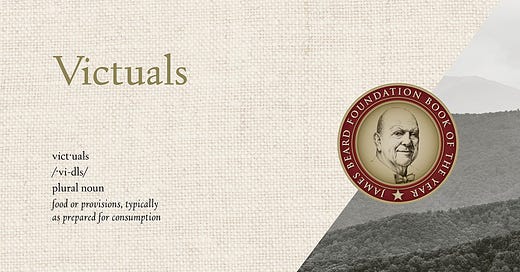Ronni Lundy's Victuals: Modern Classic Cookbooks #1
Here's the first in a series of cook and food books I consider to be modern classics. I've expanded on my original review and added further, related reading.
Matt & Ted Lee refer to Ronni Lundy as a ‘native daughter of Kentucky’ and Victuals, her latest cookbook, kicks off with a handy lesson in dialect: In Southern Appalachia, ‘victuals’ is pronounced ‘v…
Keep reading with a 7-day free trial
Subscribe to Topographic Kitchens to keep reading this post and get 7 days of free access to the full post archives.




